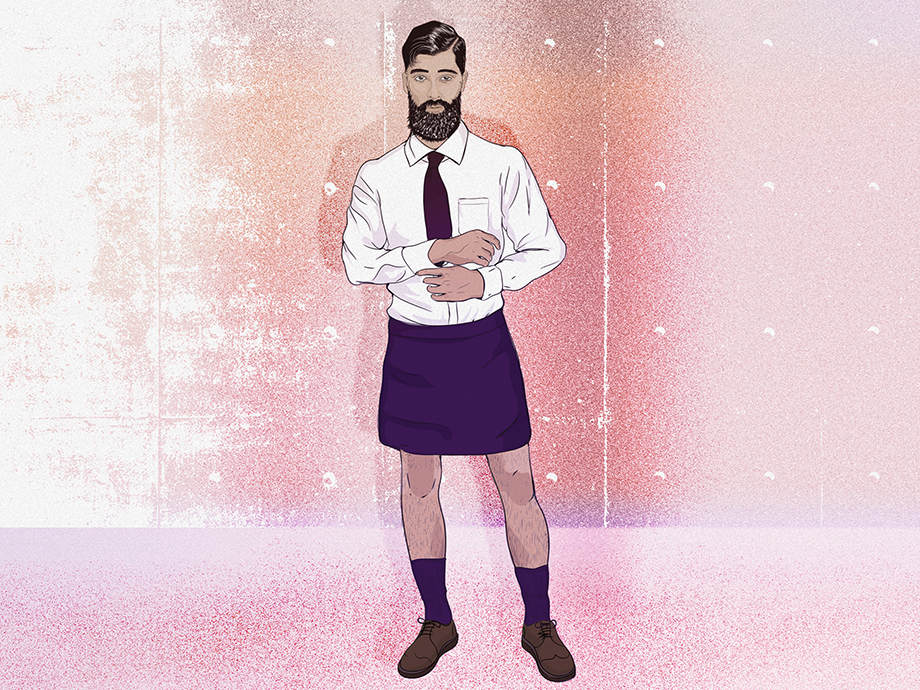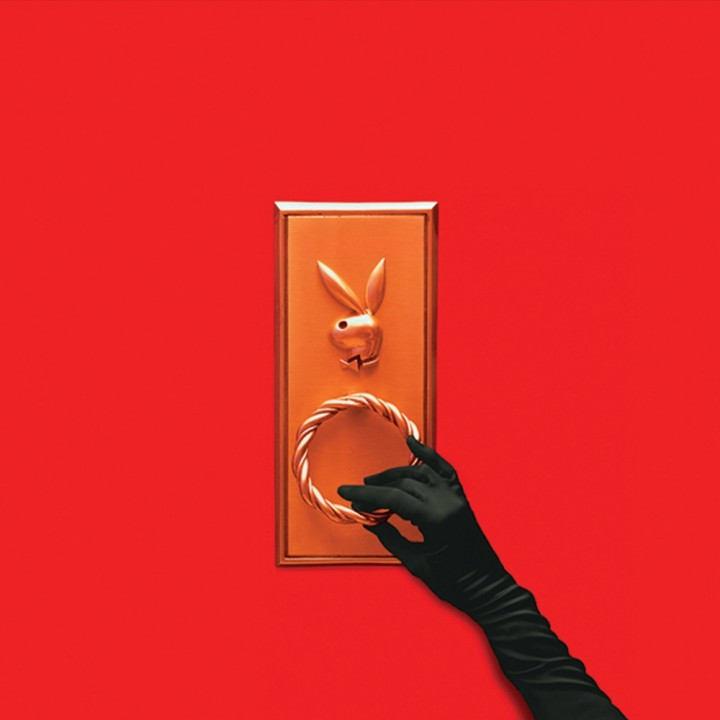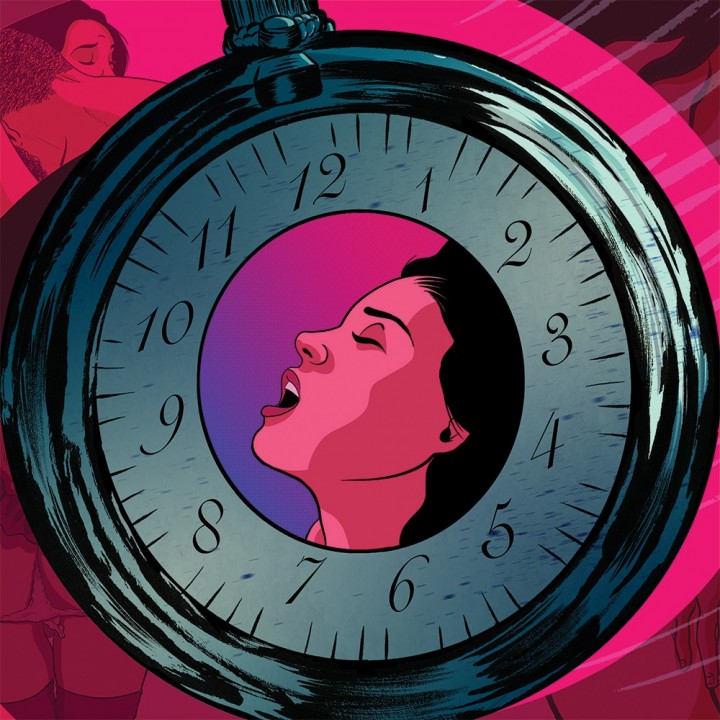
Can Men Wear Makeup Now?
Many are hesitant, but the future conventional men's grooming routine could include concealer
The morning routine of a man has seldom changed over the past century. Most of us wake up, shower with an all-in-one body wash, shave every second day before brushing our teeth and heading out the door—any or all of these steps are optional. After all, we are stoic creatures tied to routine, and proud believers in the concept of being satisfied with the bare minimum when it comes to how we look. Recently, the only thing to throw that historic regimen into disarray came around a decade ago, when the metrosexual man—one who favors eyebrow plucking and skincare routines—arrived, allowing dudes to become a little more in touch with, what we then called, their “feminine side”.
For years before this, makeup in mainstream circles has been seen as a women’s game: a 500 billion dollar worldwide industry that’s primarily fuelled by half of the world’s population, but it wasn’t always that way: Back in 3000 BC, it was standard practice for men in China and Japan to wear early versions of nail polish to assert their high-flying social status. Similarly, in 18th century England, the bourgeoisie used lead to powder their faces white, paired with a rouge lip to prove they were members of the upper and middle classes. Men and women alike followed recipe books to conjure up the perfect blusher or lip tint in those days; CVS and Sephora hadn’t quite made their way to shopping malls yet.
I think it’s hard to put makeup on and still appear manly. Part of a guy’s look is his ruggedness.
There is a slow shift happening in that realm, though, as big beauty brands take note of the liberal attitudes surrounding male beauty, aided by our generation’s obsession with ripped, Jersey Shore beefcakes who’ve catapulted the preened look into the public consciousness. It might not be the kind of conscious vanity we’re observing now, but it opened the gates for men being allowed to look after themselves without shame: permatanning, plucking their eyebrows and shaving their public hair till they looked like testosterone-pumped hairless statues.
Earlier this year, Chanel took a step forward by launching their own line of men’s beauty products ‘Boy de Chanel’ consisting of eight shades of foundation, two eyebrow pencils and a lip balm. This the first time a major cosmetics company has unveiled a gendered makeup collection geared towards men, and a sign the market for dudes wearing concealer is starting to grow. Tom Ford have done it too: the brand's concealer stick for men, available in three shades, is pretty much perpetually sold out. But are these buyers everyday straight guys—the same ones who once had an unshakably minimal routine—or are these brands catering to a queerer audience? It’s hard to tell, mainly because queer men have traditionally forgone gender binaries and just buy women’s makeup anyway; the stigma is something that demographic is more willing to confront.
Why So Many Men Chase Skirts, But Won't Wear Them
While gender neutral fashion is trending, the heteronormative man is still adamant to go pantless

Playboy surveyed a group of straight men in different lines of work to see if any of them feel inclined to use foundation, eyebrow pencils or concealers; all have at least some sort of hesitation towards the idea. Dan, a Scottish personal trainer believes that while he is “all for people who want to do it and express themselves in that way, it’s just nothing [he’d] ever been inclined to do”. Meanwhile Carrick, a creative director and photographer, believes there are other things he’d rather spend his disposable income on, acknowledging too that “straight men, aren’t quite open or ready for it yet”.
For most, it is a personal preference, and while a couple admits to having used their mom’s or girlfriend’s concealers for the odd blemish before a party or social event, none felt comfortable enough to go out and actually buy it. While it’s all well and good to wander into a drug store and pick-up a can of antiperspirant, the idea of a man putting effort into selecting the right color concealer or eyebrow pencil would still, in a women’s section of a makeup counter, likely draw shifty looks from many. After all, the specificities of makeup mean most men aren’t trusted with picking up pieces of their other half’s beauty regime; if you’re in that space it’s almost certainly to buy something for yourself.
Another major thing that stands in the way of straight men wearing makeup is the rigid boundaries of masculinity that still exist. While they’ve relaxed on many fronts, particularly when it comes to the way they are permitted to express their emotions freely, the understanding that a man should present as ‘masculine’ innately suppresses their desire to engage in behaviours typically considered feminine, be that wearing skirts, nail polish or makeup. “I think it’s hard to put makeup on and still appear manly,” Grant, an engineer from London believes. “Part of a guy’s look is his ruggedness.” He believes that lines like Boy de Chanel will go down well with men who work in the public eye and queer men, but “won’t interest Steve the plumber. The beauty of being a guy is that to be good looking we just need a haircut and a good outfit,” he adds. “I can roll out of bed and look my best within 15 minutes—without makeup.”
So while we might be praising a new generation of cosmetics companies and makeup artists for proving it’s okay for men to wear makeup, there still seems to be a fair bit of ground work done before the current generation of everyday men feel comfortable enough to don a full face of foundation at the office or on the construction site. It’s an arduous task, shaking off socially-formed gender norms, but we’re still in the beginning stages. In reality, all it takes for progress to be made and barriers to be broken is time. Even Grant, a staunch naysayer believes in that. “It’s kinda like our grandads, or even our dads, thinking we're effeminate for wearing skinny jeans,” he says. “Who knows? In 50 years time, I might be wearing makeup!”






